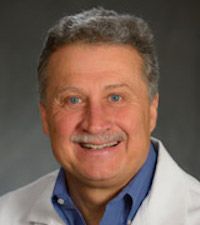Article
COPD Patients have Higher Follow-Up Rate with Pulmonologist if Treated by Nurse or Physician Assistant
Author(s):
Patients with chronic obstructive pulmonary disease (COPD) are more likely to receive short-acting bronchodilator, oxygen therapy, and referral to a pulmonologist if they are treated by nurses and physician assistants.

Patients with chronic obstructive pulmonary disease (COPD) were more likely to receive short-acting bronchodilator, oxygen therapy, and referral to a pulmonologist if they were treated by nurses and physician assistants, according to findings published in Plos One.
Researchers from the University of Texas Medical Branch at Galveston studied more than 7,200 Medicare beneficiaries with COPD in order to determine the differences in care given to COPD patients by medical doctors compared to nurse practitioners and physician assistants. The researchers noted that there is a shortage of primary care physicians in the United States, largely due to the growth of the population of older adults, increased chronic diseases and newly insured patients who need medical care.
Of the total COPD patient group, about 2,000 patients received care from nurses and physician assistants while about 5,200 received treatment from primary care physicians. Those patients treated by advanced practice providers (APPs) were more likely to be white, younger, male, residing outside of metropolitan areas and have fewer comorbidities.
APPs were more likely to prescribe short acting bronchodilators, oxygen therapy and consult a pulmonologist, the researchers reported; however, APPs were less likely to give influenza and pneumococcal vaccinations. Patients being treated by nurses and physician assistants had lower rates of emergency department visits for COPD related causes. Additionally, that patient group had a higher follow up rate with a pulmonary specialist within 30 days of their COPD hospitalization when compared to COPD patients treated by physicians.
Lead author Amitesh Agarwal, MD, reiterated the findings in a press release. Agarwal added that the more frequent pulmonologist specialist consultations in APP care may be a result of the need for expertise and skills outside of the APP sphere of typical practice in complex patients. But, Agarwal noted, the lower use of vaccination rates in the APP patient care group was likely associated with the lower overall age group of those COPD patients.
The study authors continued by highlighting the fact that the higher follow up rates with pulmonologists following COPD hospital admission in the APP group may explain the lower trends in emergency department visits and readmission.




